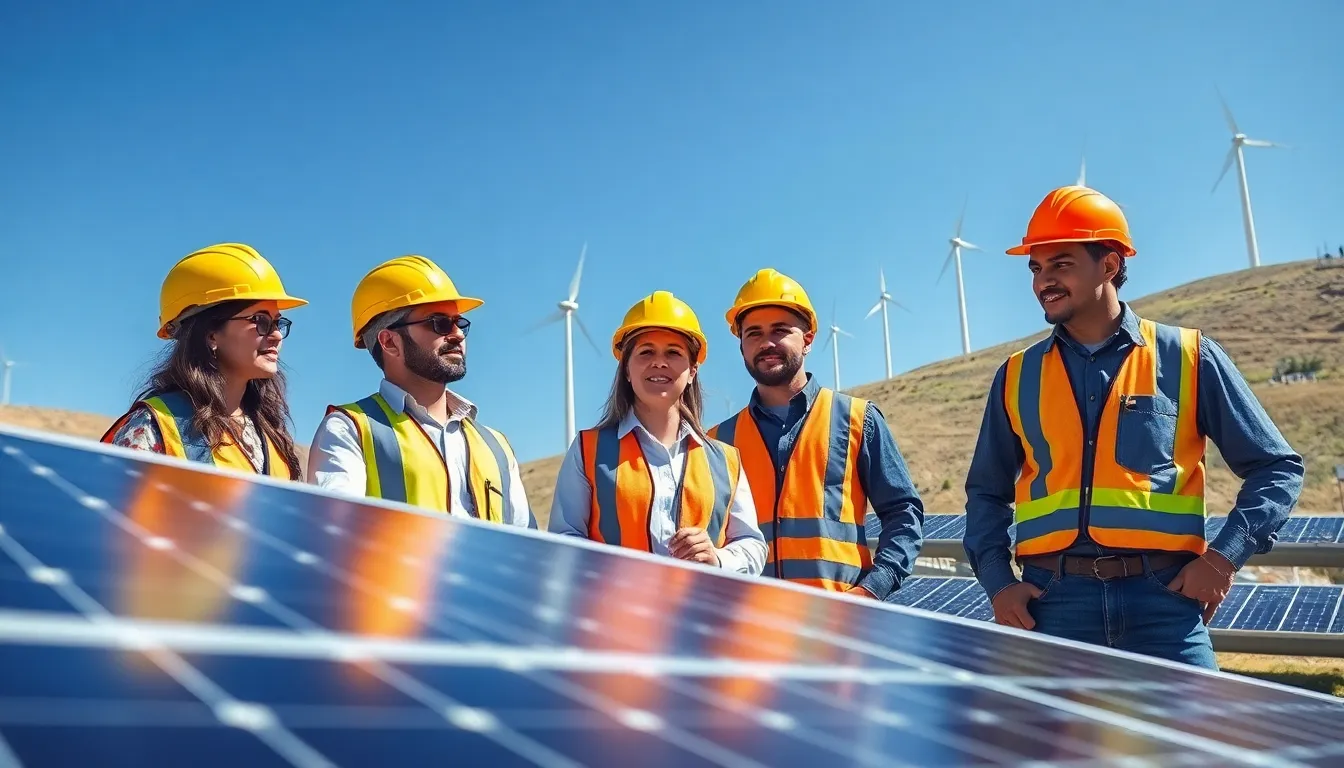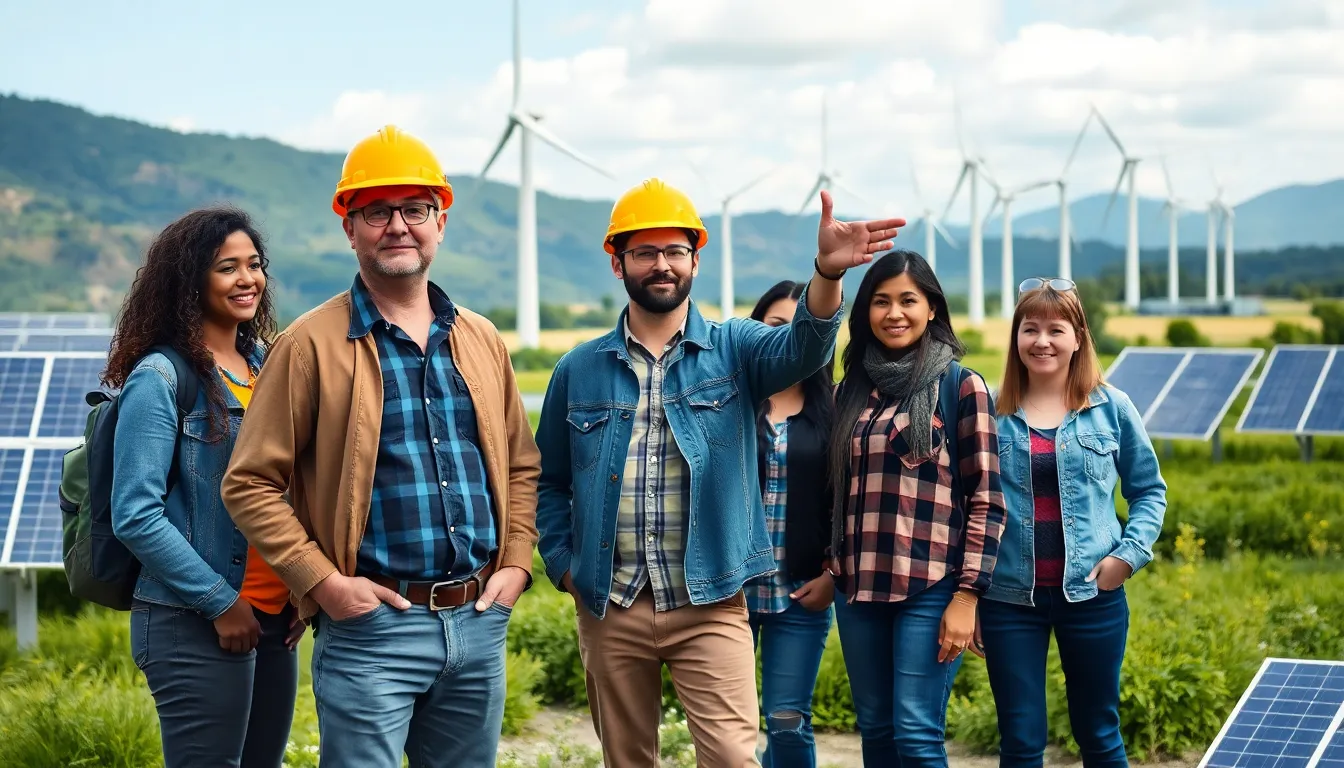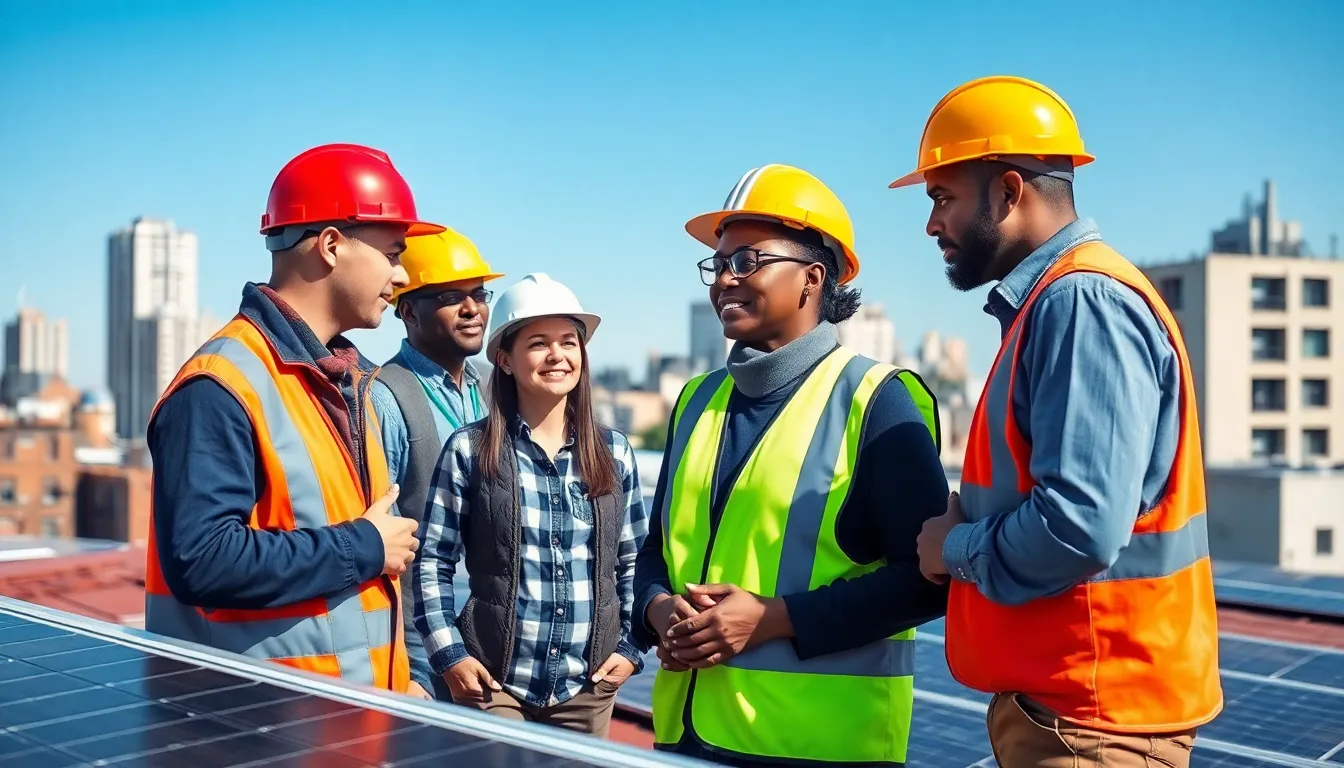As the world grapples with climate change, low-carbon technology emerges as a beacon of hope. It represents innovative solutions designed to reduce greenhouse gas emissions while promoting sustainable growth. From renewable energy sources like solar and wind to energy-efficient systems, these technologies are reshaping industries and driving the transition to a greener economy.
Investing in low-carbon technology isn’t just an environmental necessity; it’s also an economic opportunity. Businesses and governments are increasingly recognizing the potential for job creation and economic resilience that comes with adopting these technologies. As the demand for cleaner alternatives rises, the landscape of energy production and consumption is evolving, paving the way for a more sustainable future.
Table of Contents
ToggleOverview of Low-Carbon Technology
Low-carbon technology encompasses a range of innovations aimed at reducing greenhouse gas emissions across various sectors. It includes advancements in renewable energy, energy efficiency, and carbon capture methods. Utilizing solar panels, wind turbines, and hydroelectric power represents some primary renewable energy sources that directly impact emission reductions.
Energy-efficient systems leverage technologies like smart grids, efficient heating and cooling, and LED lighting to minimize energy consumption. Implementing these technologies in residential, commercial, and industrial settings contributes significantly to lowering carbon footprints.
Another vital aspect of low-carbon technology is carbon capture and storage (CCS). CCS collects carbon dioxide emissions from sources such as power plants and stores them underground to prevent their release into the atmosphere. This process plays a crucial role in decarbonizing fossil fuel-based energy sources.
Investments in low-carbon technology lead to economic benefits. The sector generates job opportunities in research, development, installation, and maintenance of sustainable systems. As demand for cleaner energy alternatives grows, economies increasingly recognize this sector’s importance for long-term resilience and competitiveness.
The transition to low-carbon technology not only addresses environmental concerns but also integrates sustainability into economic frameworks, transforming industries while fostering social responsibility.
Types of Low-Carbon Technology

Low-carbon technology includes various innovative solutions that significantly reduce greenhouse gas emissions. These technologies play vital roles in enhancing sustainability across multiple sectors.
Renewable Energy Sources
Renewable energy sources are fundamental to low-carbon technology. They produce energy with minimal or no carbon emissions. Common types include:
- Solar Energy: Solar panels convert sunlight into electricity, offering a clean energy source. As of 2023, solar installations have exceeded 1,000 GW globally, providing power to millions.
- Wind Energy: Wind turbines harness wind’s kinetic energy to generate electricity. With advancements in turbine design, the global wind energy capacity reached over 800 GW, demonstrating increasing efficiency and output.
- Hydropower: Hydropower utilizes flowing water to produce energy. It remains one of the oldest and largest sources of renewable energy, accounting for about 16% of global electricity generation.
- Geothermal Energy: Geothermal technology utilizes heat from the Earth’s core for electricity and direct applications. Countries like Iceland and the Philippines lead in geothermal energy usage.
Energy Efficiency Solutions
Energy efficiency solutions focus on reducing energy consumption without sacrificing performance. Key examples include:
- LED Lighting: LEDs consume up to 75% less energy than traditional incandescent bulbs. Their long lifespan reduces waste and energy costs significantly.
- Smart Grids: Smart grids employ digital technology to optimize electricity distribution, reducing losses and improving reliability. They support integration of renewable energy sources into existing grids.
- High-Efficiency Appliances: Appliances with energy star ratings use less energy than standard models. These products contribute to lower residential and commercial energy use.
- Building Insulation: Improved insulation in buildings can lead to significant reductions in heating and cooling demands. Energy-efficient designs can reduce energy consumption by up to 30%.
Carbon Capture and Storage
Carbon capture and storage (CCS) technologies are critical for reducing emissions from fossil fuel-based energy sources. CCS involves three main steps:
- Capture: Carbon dioxide is captured from emissions at power plants or industrial facilities. Technologies can capture up to 90% of CO2 emissions, preventing their release into the atmosphere.
- Transport: Captured carbon is compressed and transported to storage sites, usually through pipelines. Transport infrastructure is essential for deploying CCS on a large scale.
- Storage: CO2 is stored underground in geological formations, such as depleted oil fields or saline aquifers. Safe storage prevents CO2 from re-entering the atmosphere, thus mitigating climate change impacts.
These types of low-carbon technology offer effective pathways toward achieving sustainability while addressing global energy demands.
Benefits of Low-Carbon Technology
Low-carbon technology offers significant advantages that bolster both environmental sustainability and economic growth. These benefits manifest in various impactful areas.
Environmental Impact
Low-carbon technology plays a crucial role in reducing greenhouse gas emissions and mitigating climate change. Technologies like solar and wind energy generate electricity without emitting carbon dioxide, leading to cleaner air and a healthier ecosystem. Implementation of energy-efficient systems, such as LED lighting and high-efficiency appliances, conserves energy, thereby diminishing overall demand for fossil fuels. Additionally, carbon capture and storage (CCS) methods significantly decrease carbon emissions from industrial processes, offering pathways to decarbonize existing infrastructures. The combined effects of these technologies result in improved biodiversity, reduced pollution, and a more resilient natural environment.
Economic Advantages
Investing in low-carbon technology also brings substantial economic benefits. Transitioning to renewable energy sources leads to job creation in sectors like manufacturing, installation, and maintenance. For instance, the solar and wind industries have generated thousands of jobs, stimulating local economies. Energy efficiency measures lower operational costs for businesses and consumers by reducing energy bills, promoting long-term financial savings. Furthermore, as demand for cleaner energy solutions rises, nations positioning themselves as leaders in low-carbon technology can enhance their global competitiveness. This shift not only contributes to economic resilience but also fosters innovation, giving rise to new markets and opportunities in the green economy.
Challenges in Implementing Low-Carbon Technology
Implementing low-carbon technology faces significant challenges that manufacturers, policymakers, and consumers must navigate. Identifying and addressing these barriers is vital for a successful transition to sustainable energy solutions.
Technological Barriers
Technological barriers hinder the adoption of low-carbon technology. These barriers include:
- High Initial Costs: Many low-carbon technologies require substantial upfront investments, which can deter businesses and consumers.
- Lack of Infrastructure: Insufficient infrastructure for renewable energy generation and distribution complicates the integration of these technologies.
- Intermittency of Energy Sources: Renewable energy sources like solar and wind are intermittent, creating reliability issues for energy supply.
- Limited Technological Maturity: Emerging low-carbon technologies may not be fully developed or tested, impacting efficiency and effectiveness.
- Compatibility Issues: Existing systems may not easily integrate with new low-carbon technologies, leading to additional costs for upgrades.
Policy and Regulatory Issues
Policy and regulatory issues also play a pivotal role in the implementation of low-carbon technology. Key challenges include:
- Inadequate Support Policies: Limited government incentives and subsidies can dissuade investments in low-carbon technologies.
- Regulatory Uncertainty: Fluctuating regulations create unpredictability, discouraging long-term investments.
- Slow Permitting Processes: Lengthy and complex permitting processes can delay the deployment of renewable energy projects.
- Inconsistent Standards: Varying regulations across regions complicate compliance for companies operating in multiple jurisdictions.
- Resistance to Change: Established industries may resist shifting from traditional energy sources due to potential disruptions and job losses.
Addressing these challenges requires coordinated efforts among stakeholders, including government entities, private sectors, and communities, to ensure the successful deployment and scaling of low-carbon technologies.
Future of Low-Carbon Technology
Future advancements in low-carbon technology hinge on innovation and increased investment. Emerging technologies in renewable energy aim to enhance efficiency and lower costs. The integration of artificial intelligence and machine learning boosts energy management systems by optimizing performance and predicting demand shifts.
Technological development in energy storage sees significant progress, allowing for better storage solutions that mitigate the intermittency of renewable energy sources. Advanced battery technologies, such as solid-state and flow batteries, provide longer life cycles and increased efficiency.
Smart grid technologies evolve to enable better communication between energy producers and consumers. This evolution facilitates demand response initiatives, which optimize energy use based on consumption patterns.
The transportation sector transforms with electrification and alternative fuels. Electric vehicles gain market share, supported by improved battery technologies and expanded charging infrastructure. Hydrogen fuel cells emerge as viable alternatives for heavy-duty transportation, promising reduced emissions and greater efficiency.
Carbon capture, utilization, and storage (CCUS) technologies advance to capture emissions from industrial sources effectively. These innovations contribute to the decarbonization of challenging sectors, such as cement and steel production.
Policy measures play a pivotal role in guiding the future of low-carbon technology. Governments implement supportive regulations that stimulate research and development. Economic incentives can drive investments in low-carbon solutions, promoting wider adoption across industries.
Public-private partnerships enhance collaboration for innovation, ensuring the continuous evolution of low-carbon technology. By fostering an ecosystem that supports technological breakthroughs, stakeholders can accelerate the transition toward a more sustainable economy.
As commitment to net-zero targets strengthens globally, the emphasis on low-carbon technologies grows, making them critical for future energy systems. The trajectory of innovation, policy support, and market adaptation shapes not only environmental standards but also long-term economic viability.
Low-carbon technology stands at the forefront of the global effort to combat climate change. By embracing innovative solutions that prioritize sustainability and economic growth, societies can significantly reduce their carbon footprints. The integration of renewable energy sources and energy-efficient systems not only addresses environmental challenges but also opens doors for job creation and economic resilience.
As advancements continue to emerge, the collaboration between stakeholders will be vital in overcoming existing barriers. With supportive policies and investments in cutting-edge technologies, the transition to a low-carbon future can be accelerated. This commitment will not only enhance environmental standards but also ensure long-term economic viability in an increasingly competitive green economy.






